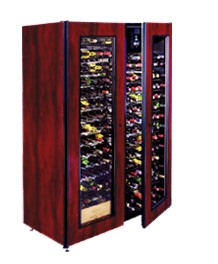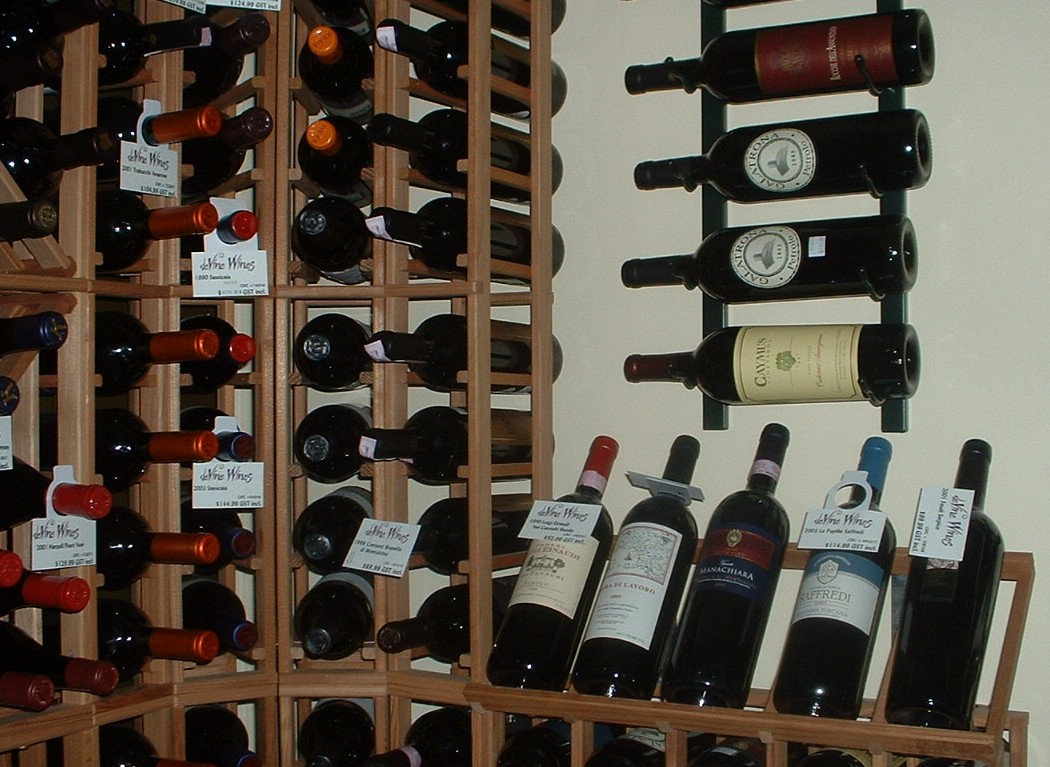 Author: Dirk Chan
Author: Dirk Chan
I’ve had many requests for information from customers about what it takes to start their own wine cellars. There are several key items to address to see whether the intended storage space you have is suitable or not:
1) temperature – this is the key item to address, the ideal cellaring temperature is 13C (55F) which is the defacto standard because it mirrors the temperature of the caves in Champagne in France. If you’ve purchased wines that are in the hundreds of dollars and have a history of cellaring potential, then something that is steady around this temperature is a must. For short term cellaring (up to 10 years), a little higher 16C is ok. The key point here is you’d rather have a stable and constant higher ambient temperature (16 or 17) then have the yo-yo effect where it is 22C during the day and 14C at night. If you have yo-yoing temperatures, then forget about cellaring, and buy your wines for current drinking.
If you are purchasing wine as an investment rather than for drinking, then a proven cellar is a must as auction house will want documented proof that the wine you’re trying to sell has been properly maintained since release. To get top dollar for your wine, make sure of the provenance (who you purchased it from) is good and well-treated (especially if purchasing from a private cellar). This is why purchasing futures is a good idea, it has less chance of being in the hands of multiple owners, it comes directly from the cellar door to your home only with one intermediate stop at the retailer.
For investment purposes, you definitely should hire a professional to build a cellar, or purchase the storage units such as Koolspace (approximately $2400 installed for 500 bottle unit that comes in Red Burgundy, Natural or Black finish) that will keep the wine constant at 13C. If purchasing units, my advice is to think of the bottle capacity you want, and then double it – you will be amazed how often people end up buying second units as they fill up the first unit in no time at all (just ask yours truly!!).
 2) humidity – purists call for 80% humidity, but this is not achievable in Alberta, you’d be lucky to get to 40%. If you force it by introducing humidity into the environment, watch carefully as molds will start forming under the capsules of the wine bottle. I find humidity to be an overstated requirement, and as long as you have the bottles lying down, and the cork is kept moist by the wine inside, this will be alright. The idea is not to stand up the bottle for it may dry out the cork and leak in air that will damage the wine.
2) humidity – purists call for 80% humidity, but this is not achievable in Alberta, you’d be lucky to get to 40%. If you force it by introducing humidity into the environment, watch carefully as molds will start forming under the capsules of the wine bottle. I find humidity to be an overstated requirement, and as long as you have the bottles lying down, and the cork is kept moist by the wine inside, this will be alright. The idea is not to stand up the bottle for it may dry out the cork and leak in air that will damage the wine.
3) darkness and reverberation – i find both of these to be over-rated, and unless your residence is under a train track, shock and reverb is a non-starter. Darkness, yes, well, who’s going to purposely shine a light over their bottles? Most of us geeks will go down once in a while and turn on the light and admire our babies, but that’s the extent of light that the bottles will see.
Perfectly cellared bottles have more liveliness, freshness, and certainly superior color. This has been proven time and time again, especially in direct comparison of bottles cellared in units versus those that were not. Of course, there are only great bottles of wine, and there is no accounting for bottle variation even if properly stored. Make no bones, that a wine cellared perfectly for 20 years ‘should’ definitely show a marked improvement over another bottle not stored well for 20 years. Some say the difference is noticeable even at 10 years of age.
Another thought to keep in mind is that 90% of the wine produced in the world are not suitable for cellaring for 10 years let alone longer. Look to purchase and cellar proven agers (Bordeaux, Sauternes, Port, Madeira) to add to your collection. True enough that most wine sold at stores these days are too young and should be cellared for a year or two, but then decanting it for an hour or so should give you an enjoyable experience.
While most New World wines are made for earlier consumption, and the Old World wines tend to need a few years, this is a generalization that must be evaluated on a producer basis. Alas, there are ageworthy wines produced in every country, you just have to find the right bottle that is worth your time and money.
Finally, it is nice to have a mature cellar (around ten years of buying every year) where you can pull wine out whatever befits the occasion. Consider it for those special occasions down the road – anniversaries, child birthyears and graduation where you can just go downstairs and pull out a fine bottle of bubblie to celebrate whenever you need it! Awesome!
For more information on cellaring, come into the store and we can help you out, or ask a question on this blog.
For more information on cooling units or do-it-yourself racking, check out Koolspace at http://www.vintagekeeper.com/web/new
When we considered purchasing a vintage keeper from the gang at deVine, we had to think about the size of our home, and where we would put this treasure trove. (Living in a one bedroom 700 square foot apt has its challenges.)
I can hear their words, “Get the 500 bottle capacity size, you’ll outgrow the smaller one in no time”. I kept thinking about the limited real estate in the room, and stubbornly, stuck to my guns. Sadly.
The assembly of the vintage keeper was a fairly easy task. And it really did not look that big, nor did it take up too much space. And yes, they were right, we outgrew it and are now looking at getting a larger unit! I wished I had listened to them.
The unit is quiet and looks handsome, matching the blonde wood of the dining room table.
Comment by lmarkin — January 16, 2009 @ 11:09 pm